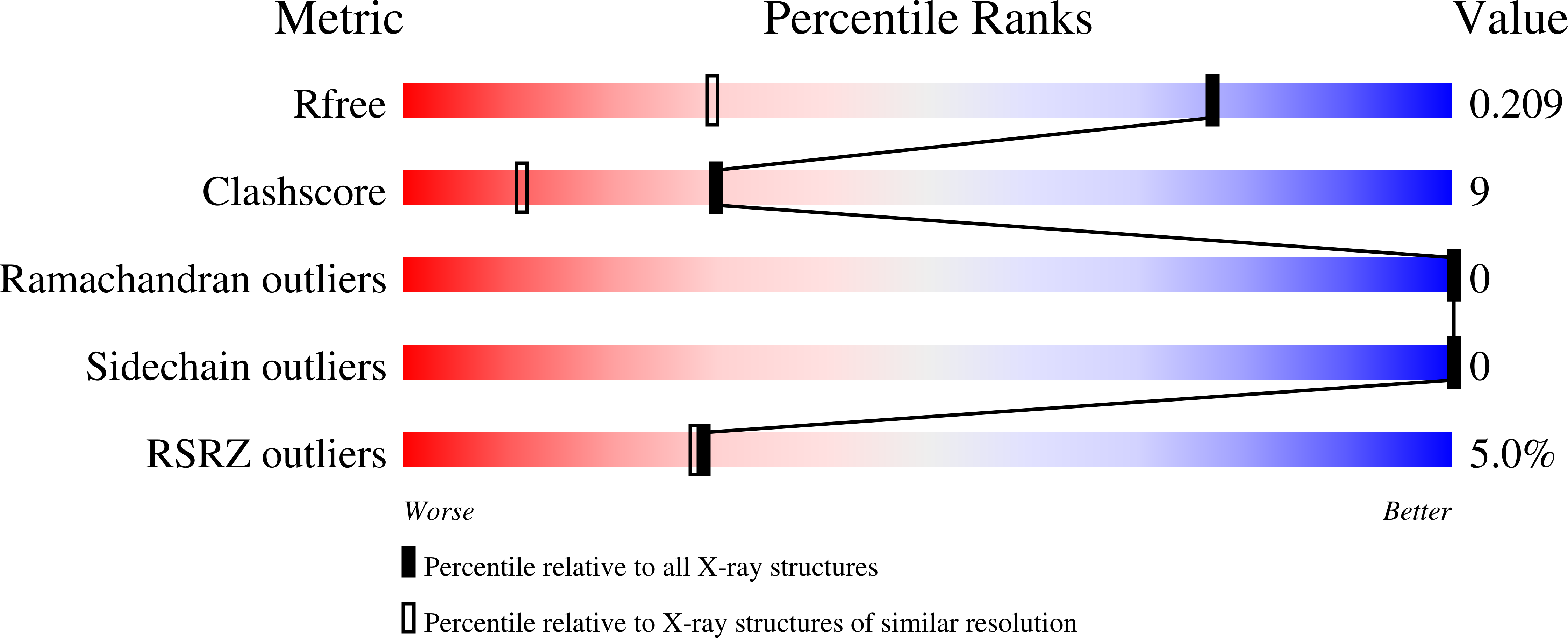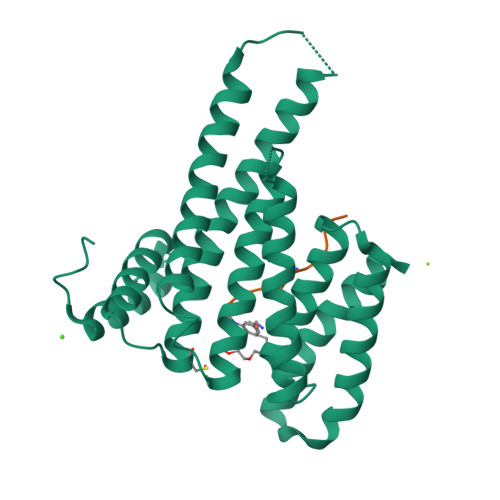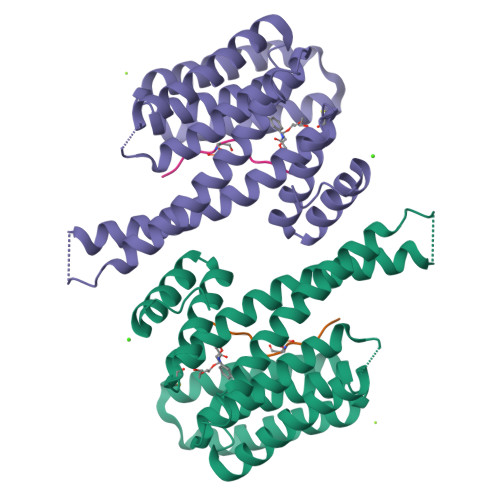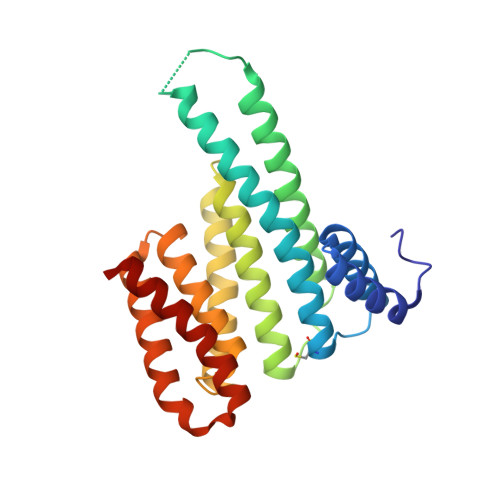Crystal structure and ligandability of the 14-3-3/pyrin interface.
Lau, R., Hann, M.M., Ottmann, C.(2023) Biochem Biophys Res Commun 651: 1-7
- PubMed: 36774661
- DOI: https://doi.org/10.1016/j.bbrc.2023.02.013
- Primary Citation of Related Structures:
8C28, 8C2D, 8C2Y, 8C30 - PubMed Abstract:
Overactivation of Pyrin is the cause of the inflammatory diseases Mediterranean Fever and Pyrin-associated autoinflammation with neutrophilic dermatosis (PAAND). Binding of 14-3-3 proteins reduces the pro-inflammatory activity of Pyrin, hence small molecules that stabilize the Pyrin/14-3-3 complex could convey an anti-inflammatory effect. We have solved the atomic resolution crystal structures of phosphorylated peptides derived from PyrinpS208 and PyrinpS242 - the two principle 14-3-3 binding sites in Pyrin - in complex with 14-3-3 and analyzed the ligandability of these protein-peptide interfaces by crystal-based fragment soaking. The complex between 14-3-3 and PyrinpS242 appears to be much more amenable for small-molecule binding than that of 14-3-3/PyrinpS208. Consequently, only for the 14-3-3/PyrinpS242 complex could we find an interface-binding fragment, validating protein crystallography and fragment soaking as a method to evaluate the ligandability of protein surfaces.
Organizational Affiliation:
Laboratory of Chemical Biology, Department of Biomedical Engineering and Institute for Complex Molecular Systems, Technische Universiteit Eindhoven, Den Dolech 2, 5612 AZ, Eindhoven, the Netherlands.

























